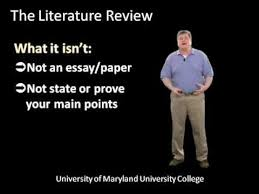Sociologists Begin Conducting a Literature Review GOAL: This assignment introduces you to how sociologists begin conducting a literature review, i.e., learning what we already know about a topic before doing additional research on it.

OBJECTIVES: The objectives of the assignment are for students to demonstrate:
Ability to conduct searches for academic, peer-reviewed, sociological articles
Understanding of the structure of an academic article
Ability to read and understand academic articles
Ability to summarize others’ ideas in writing, and
Proper use of citations using ASA style.
DESCRIPTION:
Complete the 4 brief information literacy modules posted under “Assignment #2.”
(choose one of the following three classical theories: functionalism, conflict theory, symbolic interactionism;
choose one of the following four contemporary theories: feminist theory, critical race theory, postcolonial theory, queer
theory)
Choose a sociological topic that interests you.
Search Sociological Abstracts to find two articles related to your topic in sociological, peer-reviewed journals.
Read the two articles.
Write a paper that:
Summarizes research question, methods, & findings of each article in your own words,
Compares the two articles, and
Reflects on what you have learned.
LENGTH/FORMAT:
Between 1,000-1,500 words.
Double spaced in a 12-point font.
Saved as either .doc or .docx (Other formats will not be read)
The first page of your submission must include your name, tutorial section number, UofT email address, and UofT student number. (You don’t need a separate title page.)
ASSIGNMENT OUTLINE:
Introduction: Brief explanation of your research topic
Summaries: For each article, explain the author’s research question, the methods used, and major findings. You can either explain each article separately or you can weave them together and explain them in tandem. In this section, you are only reporting on what you read.
Discussion: Compare the two articles. How were their questions, methods, and findings similar or different?
Conclusion: What were the most interesting or useful things that you learned from the articles? What other questions did they raise for you?
Reference List: Complete citations for any works that you referred to in your assignment, formatted in ASA style. (not included in word count)
Academic Integrity Checklist: This checklist helps you review your work to ensure that you complied with all of the requirements for academic integrity. You are required to copy and paste this completed checklist as the last page of your document. Your typed name at the bottom of the list will serve as your signature.
ACADEMIC INTEGRITY AND CITATIONS:
As always, you MUST properly cite ANY sources that you draw on in your essay (e.g., lecture, textbook, news articles, etc.).
When you paraphrase (restating in your own words), you must:
Include an in-text citation with name of author AND year of publication.
Include a full citation of the source in the reference list.
When you use a direct quote (the author’s exact words), you must:
Include an in-text citation with name of author AND year of publication.
Include the page number on which the original material appears.
Use quotation marks around the words.
Include a full citation of the source in reference list.
However, you should minimize your use of direct quotes. We need to see that you understand the material and you can best demonstrate that by restating material in your own words.
Please review the handouts posted on Quercus about how to avoid plagiarism, how to paraphrase, and how to use ASA (American Sociological Association) style. Please also review the information in your syllabus regarding academic integrity and the U. Of T. Code of Behaviours on Academic Matters. Claiming that you “didn’t know” or “didn’t mean to” will not reduce your penalty if you commit an academic offense.




